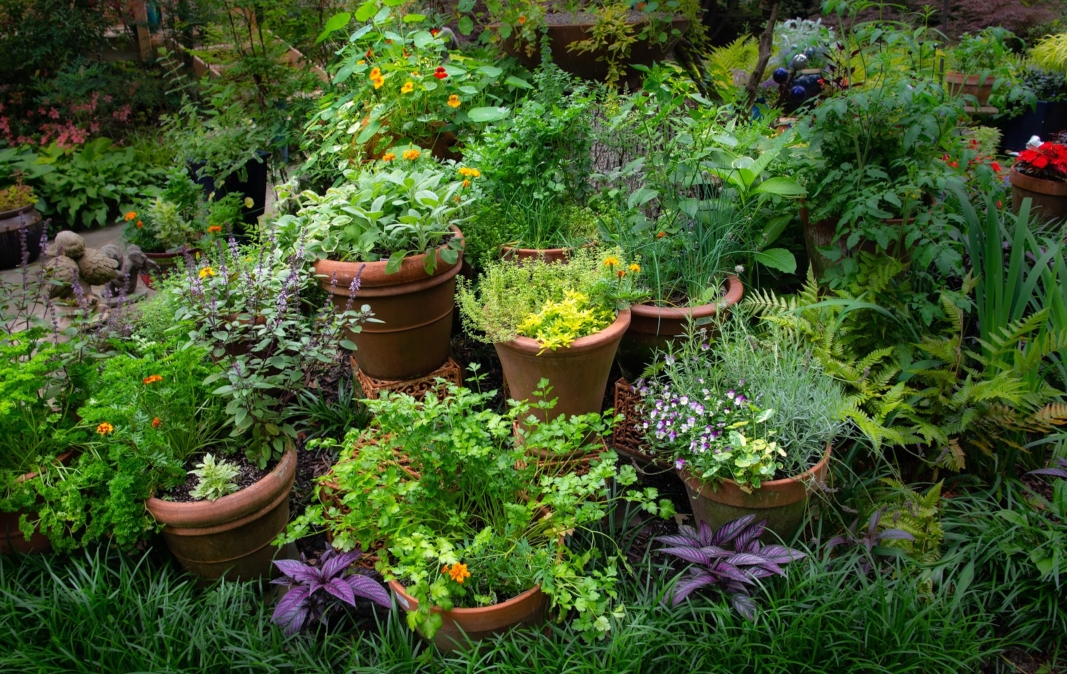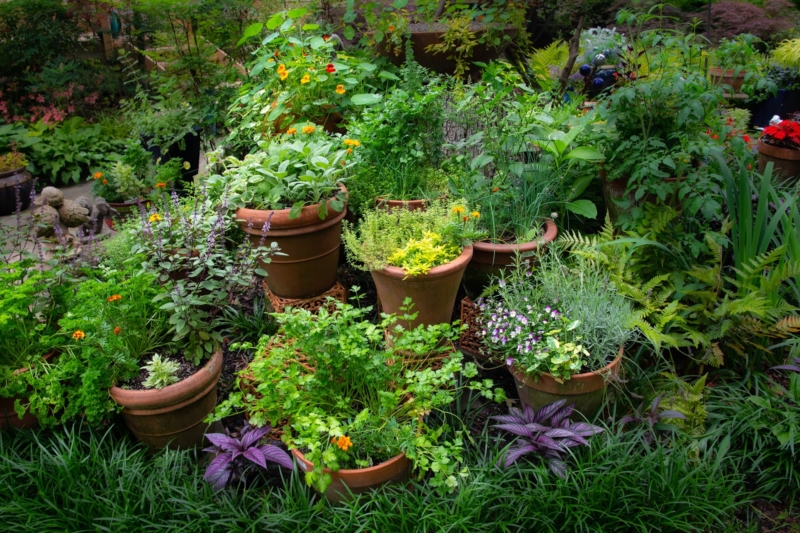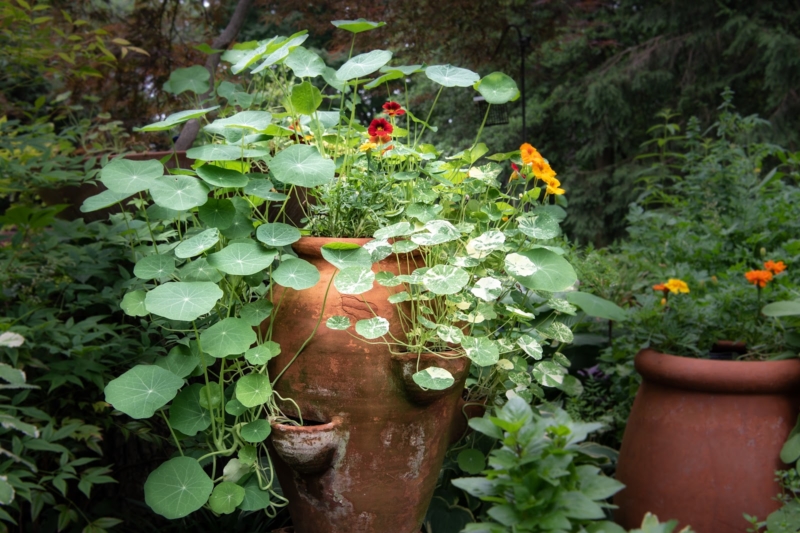
Creating Herb Gardens with Containers
Peg Bier, Merrifield Plant Specialist
There is value in seeing new possibilities when something you cherish dies. In this case, I recently had to remove a very old, large oak just off my deck. Where shade was present before, now there is sun. When the oak tree stood, my herb garden was in what I call my “South 40,” some distance from my kitchen, but the removal of this old tree has given me the opportunity to try moving it to a new location.
Now, in place of the tree, I have a large group of pots containing the herbs I love most and a lot of others I enjoy for their fragrance or use in cooking. They are within easy reach of my kitchen, which is ideal. I planted a cascading Japanese maple in a very large clay pot, and placed it on top of the 2 foot tall stump, thus creating a new staging area in the garden. On the shadier side of the tree stump, I’ve completed my new garden space with a large collection of annuals that are favorites of the birds and butterflies.
This type of herb garden is also something that can be achieved in small spaces. Even a sunny balcony can support a few of your favorite herbs.
Life in the garden is a learning curve and over time I have experimented with many things as I try to find the absolute best way to grow herbs. This time I am using four different potting soils for evaluation. Merrifield, Pro-mix, Espona and Foxfarms. So far they are doing equally well! After I place a piece of landscape fabric over the drainage hole, I incorporate a handful of organic Plantone, and a half handful of Greensand, Rock phosphate, and Gypsum into the soil mix. This has been working well for me, but may not be necessary for all gardeners. Herbs don’t need too much fertilizer so I will observe to determine whether they need more during the growing season. I always hold the potting mix 2” from the top and cover with 1⁄2” small gravel (⅜” River Jacks) or Pea Gravel will work. This deters squirrels from digging and keep the soil in the pot when watering.
I choose large pots, most in excess of 16” because watering is easier. Small pots require closer monitoring. Water deeply so that the entire root ball is saturated and then again when soil begins to dry. Find that happy medium between too wet and too dry, and maintain with the proper amount of fertilizer.
Plant the plants you love and will use frequently to cook with. I was born in the deep south where too many things were fried. Herbs came to my rescue and I learned to savor the various flavors they gave to a dish. Yes, fried chicken is a must now and then, but I rarely fry anything now. Salmon grilled with thyme and fresh dill is a party in your mouth!
Several herbs can be planted together in one large pot or the pot can be devoted to just one. I will have fresh young plants waiting in the wings for parsley, dill, and basil as they will not last the full season. I grow several varieties of Basil (sweet, thai, columnar and african), sage, thyme, oregano, chives, rosemary, lavender, and tarragon.
Nasturtiums and marigolds provide color, are edible and beautiful garnish.
I did include cherry tomato and a habanero pepper plant. I hope the deer don’t harvest those! Herbs repel somewhat, are not tasty to deer, and cannot be sprayed with Bobbex, a natural spray that saves my other tasty (to deer) plants.
And so, where there is disappointment in a major loss of a big tree, I am now enjoying a particularly attractive and useful garden right under my nose. Yes, there is much fragrance and sensory delight! Harvest frequently and enjoy the organic, chemical free, delightfully tasty and diverse flavors of the garden!





